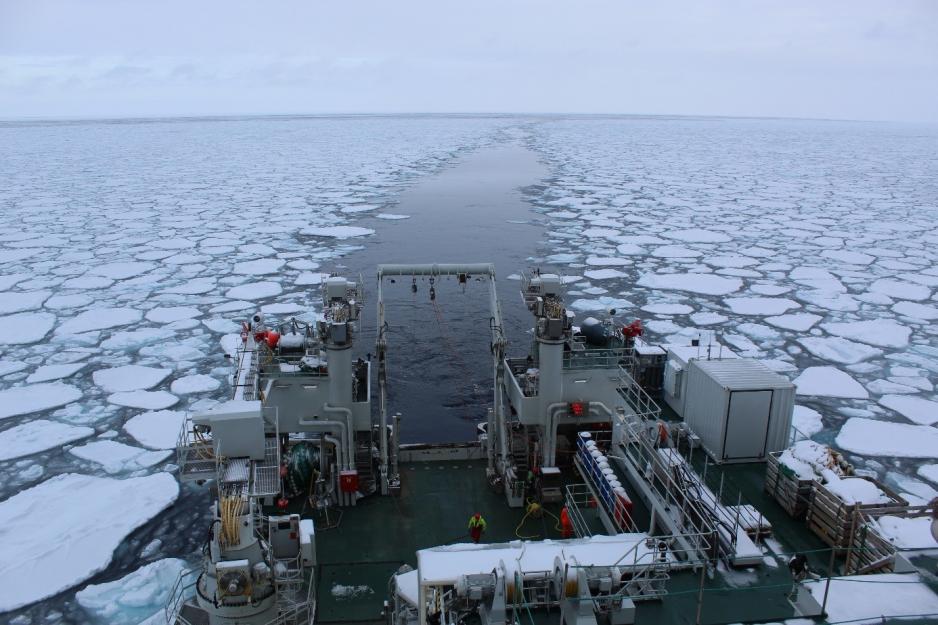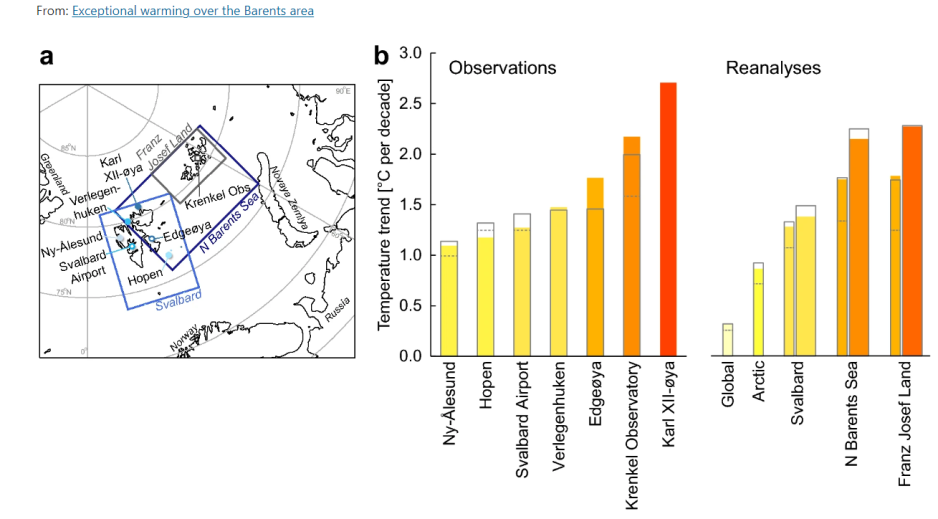New Report: Exceptional Warming Over the Barents Area

Broken-up sea ice floes in the marginal ice zone of the Barents Sea, March 2021. (Photo: S. Gerland, Norwegian Polar Institute).
Temperatures in the Barents Sea region are record high and may affect extreme weather in the US and Europe.
New data recently published in the journal Scientific Reports has revealed extraordinary rates of global heating in the Arctic, up to seven times faster than the global average. The research is based on data from automatic weather stations on the islands of Svalbard and Franz Josef Land.
The heating is happening in the North Barents Sea, and is suspected to trigger increases in extreme weather in North America, Europe and Asia. According to researchers the heating in the Barents sea region is an “early warning” of what could happen across the rest of the Arctic.
The data was collected over the past 20–40 years from the northern archipelagos in the Barents Sea located on the border between the Barents Sea and the Arctic Ocean.

Exceptional warming over the Barents area. (Illustration from the report)
More extreme
The data show annual average temperatures in the area are rising during the year by up to 2.7 degrees Celsius per decade, with particularly high rises in the months of autumn of up to 4 degrees Celsius per decade. This makes the North Barents Sea and its islands the fastest warming place known on Earth.
In the recent years, researchers have seen temperatures far above average recorded in the Arctic. It was already known that the climate crisis was driving heating across the Arctic three times faster than the global average, but the new research shows the situation is even more extreme in places.
Changes in surface air temperature and sea ice are the main drivers of the ongoing environmental transformation of the Arctic and is the leading signal of global warming. For more than four decades, the Arctic sea ice extent has declined almost continuously. However, the sea ice trend is accelerating for all calendar months, meaning larger losses towards present time.
All surprised
The fact is that the sea ice that reflects sunlight is melting away. This results is the darker ocean below absorbing more energy. Losing sea ice also means it no longer restricts the ability of warmer sea waters to heat up the Arctic air. The more ice is lost, the more heat accumulates, forming a feedback loop.
“We expected to see strong warming, but not on the scale we found,” said Ketil Isaksen, senior researcher at the Norwegian Meteorological Institute and who led the work.
Such a increase in temperature will have a major impact.
“We were all surprised. From what we know from all other observation points on the globe, these are the highest warming rates we have observed so far, Isaksen said to The Guardian.
Better understanding
If the rise in ocean temperature and salinity continues, the originally cold and stratified Arctic shelf region may be transformed into an Atlantic-dominated climate regime with a warmer and more well-mixed water column strongly preventing sea ice formation.
However, the Barents sea ice cover is largely affected by sea ice transported from the Arctic Ocean, and events of sudden enlarged sea ice or freshwater influx to the region may revert or postpone this Atlantification.
Isaksen said to NRK that he hopes the new study from will contribute to a better understanding of what is happening and will happen in the Arctic.
"Such a increase in temperature will have a major impact on wildlife, the natural environment and the Arctic population. Those who live in these areas depend on snow, ice and cold to live where they do, he says.


